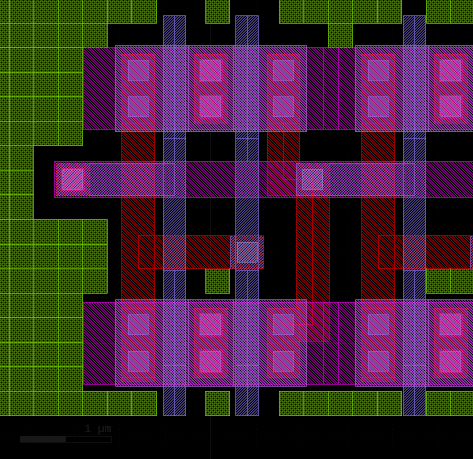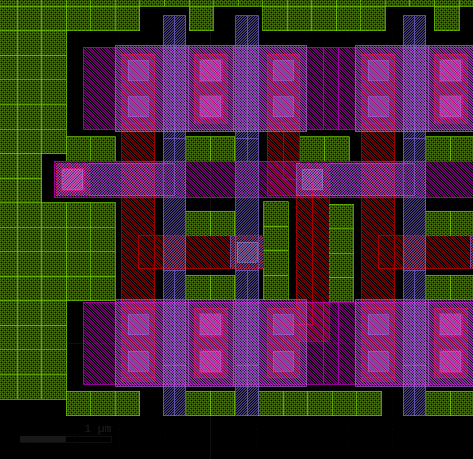The Fill (Tiling) Utility
The fill utility creates a regular pattern of fill unit cell instances in certain areas of a layout. This feature is usually referred to as "tiling" or "fill". It is based on a rectangular unit cell which is repeated in x- and y-direction to fill the available space. In most cases, the intention is to fill empty areas in the layout to enhance the layout uniformity for a better process performance.
Before the fill utility can be used, a fill cell must be prepared in the layout that is filled. The dimension of the cell are defined by a box drawn on an arbitrary layer. This box must represent the "footprint" of the cell. This is the space that one instance will cover in the region to be filled.
The fill utility is found in the "Utilities" sub-menu of the "edit" menu and is available in edit mode only. To use this utility, open the dialog and
- Select the outer boundary of the fill region ("what to fill"). Available choices are: Full cell, the interior or the polygons on a given layer, the interior of all selected polygons, a single box or an area defined by a ruler.
- Specify if the fill area should keep a certain minimum distance to the border of the fill region.
- Specify the regions within the fill region which must not be filled. Available choices are: All layers (don't create fill over any polygon drawn), all visible layers (don't create fill over any polygon visible), all selected layers or don't exclude anything.
- If the fill tiles must keep a certain minimum distance from the exclude regions, specify that distance in the "Spacing around exclude areas" entry field.
- Specify the fill cell and the boundary layer which defines the cell's footprint in the "Fill Cell" group.
By default, the fill utility operates on a fixed raster. This can lead to a poor fill efficiency in some cases. The fill utility offers a "Enhanced fill" option, where it tries to find a cell arrangement which is not necessarily on a common raster but provides a better fill performance. In addition, second-order fill is supported. In that case, a second - usually smaller - fill cell can be specified which is used to fill the remaining areas of the layout.
The following screenshots show the effect of the different fill modes for some artificial fill problem.
Default: |  | |
Enhanced: |  | |
Enhanced plus |  |